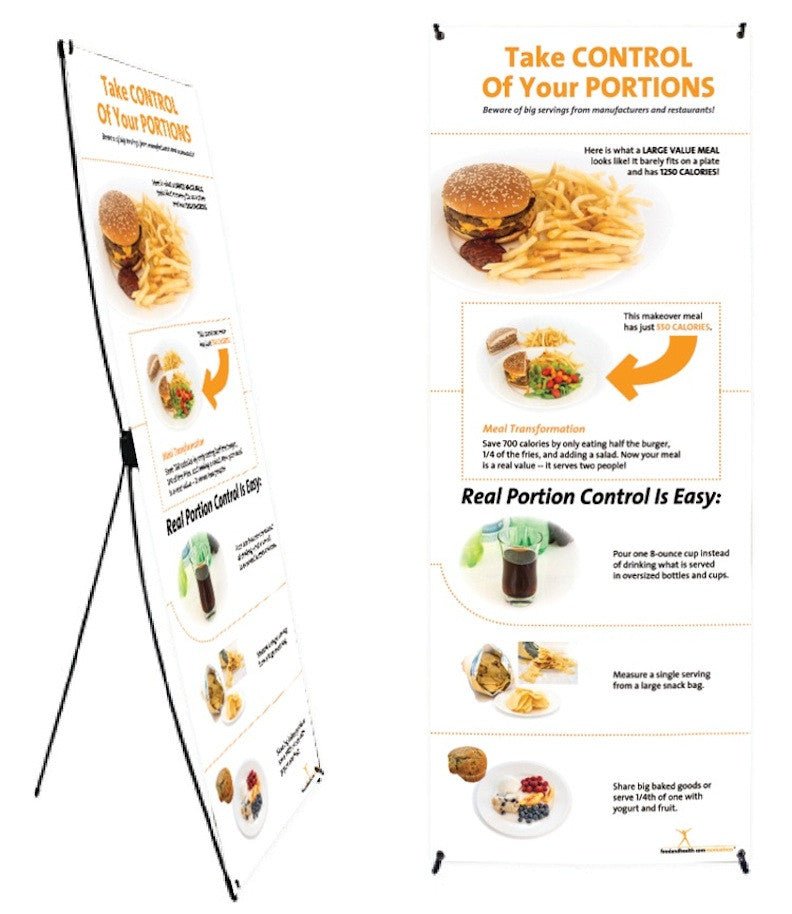My sons recently offered to buy dinner for me and my husband. They were ordering from their favorite burrito place and asked what I wanted. When I chose the kids meal, they were dumbfounded.
Why would you get the kids meal? It’s so small!
(Even my husband was against it, albeit for a different reason: The boys are actually paying for our dinner, and you’re ordering the cheapest thing on the menu?!)
I explained that child-size meals at restaurants are usually pretty close to the correct portion size for me and lots of other Americans. No way, mom! They couldn’t believe it.
Chances are, your clients, students, or employees would feel the same way if they ordered their favorite burrito and were served the child’s portion size. Yet portion control is key to a healthy eating pattern.
Here are some fun ways to teach any audience about portion control whether in person or on Zoom:
- Use pictures. The good thing about the concept of portion control is that, with the right pictures, you don’t have to say a word.
- People will get the message just by walking past our Take Control of Your Portions Poster or Portion Control Banner.
- Make your own portion control bulletin board with photos and handouts from our Portion Control DVD/CD Set.
- Do some hands-on measuring. Plastic food models are great when you’re seeing clients or students in person. But when your audience is on a computer screen, you have to get creative. Use our Portion Control DVD/CD Set to teach the basics, but break up the lessons with some hands-on measuring.
- Let participants take turns showing a food or beverage from their kitchen (chips, peanut butter, cereal, soda, juice, etc). First, ask them to show what they think is the correct portion size (say, a tablespoon of peanut butter or 4 ounces of juice). Next, have them actually measure out the correct portion size, using measuring cups or spoons, or even a kitchen scale if they have one.
- Check plate size. Have participants measure the plates they use at home. Are they more than 9 inches? How about the mugs and glasses – how many ounces do they hold? Our Portion Control: Don’t Go Overboard handout would go well with a lesson like this.
- Show real-life examples of portion control. Record short videos to post on social media or send to your clients. For example, measure out one serving from a basket of tortilla chips you’d see at a Mexican restaurant. Or show how a huge muffin from your favorite coffee shop cannot possibly fit on MyPlate.
Hollis Bass, MEd, RD, LD

Portion Control Banner and Stand 24" X 67"
$125.00 $135.00
Add to Cart

Portion Control Banner 48" X 36"
$88.00 $110.00
Add to Cart

Scale Down Your Portions Banner 48X36
$88.00 $110.00
Add to Cart




